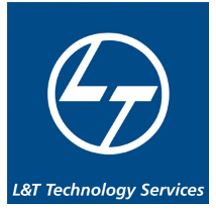


Challenges: LTTS’ customer followed a traditional 2D AutoCAD driven process for project estimations and product design. This led to multiple design iterations, a longer design lead time, and several change requests at a later stage of the development lifecycle, resulting in massive inefficiencies and business losses. The main stumbling blocks were:
To overcome these challenges, LTTS used its combined understanding of water clarifiers, product design and digitalization, and engineered a set of solutions that turned around the customer’s operations.
LTTS’s Approach and Solution: LTTS developed the following:
Sales Configurator tool that automatically generates representative 3D models based on the site specification inputs. The tool gives a very good estimate of the complexity of the system, the amount of effort involved, and the type of components included. This has significantly streamlined the bid management process and resulted in better technical & commercial decisions for the customer.
Design Automation tool to capture critical site base data for each project. Building on the sales configurator tool, this feature enables precise design control of every component by generating a model that looks exactly like the intended finished product. Engineers use this feature to study the interactions of various components and to identify hidden issues before getting onto detailed designing. It enables different designers to come to a common platform and rapidly generate models, based on site data and customer specifications.
Plug n Play Library: LTTS built a repository of reusable designs and drawings. This helped the design team reuse older designs, bring in design standardization, and create manufacturing drawings quickly. The modelling library was linked to the assembly configurator to automatically extract customer specific information. As a result, it became very simple to build product variants.
Macros: LTTS built macros to help the customer automate repetitive tasks. Macros are used to give a controlled platform the ability to automate repeatable work. This results in a uniform and consistent quality of outputs.
Quantifiable Business Benefits: The business benefits are visible in the quantum jump in percentages:

